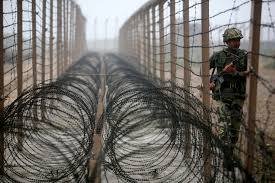Senior BJP Member of Parliament Mr. Rajiv Pratap Rudy kick-started the discussion which was followed by other panelists – Brig. Arun Sahgal (Retd.), Maj. Gen. Sheru Thapliyal (Retd.) and Dr. Rajeswari Pillai Rajagopalan. The discussion was chaired by Brig. Gurmeet Kanwal (Retd.), Director, Centre for Land Warfare Studies. Mr. Rudy, who had visited some of the border areas in Leh, Ladakh, Arunachal Pradesh and northern Sikkim as part of a team set up by his party to study reported Chinese incursions, said: “The whole border is a matter of perception for both India and China. While we say this is part of India as per our perception, the Chinese have a different perfection. For thousands of miles, there is no population and one has to believe what the system tells me.”
It was noted that for many decades the Indian government, including the Army and the bureaucracy, were averse to the idea of developing infrastructure in the border areas for two considerations: first, that improved infrastructure will be taken advantage of by Chinese troops and second, because having infrastructure in border areas also meant they have to defend the infrastructure. This perception has, however, changed today. In the changed context, there is an opportunity for the two countries to explore more interactions through their border. Improved border infrastructure could serve for further cooperation in the field of trade and commerce, while addressing the asymmetry and imbalance between India and China.
The discussion was contextualized with the nature of border disputes and border management between the two countries. Sino-India border has been marked by incursions and transgressions. The Line of Actual Control (LAC) between the two countries is not delineated and therefore it continues to be perception-based. Brig. Kanwal said that incidents of face-offs between the two sides have not happened in the past few years. However, there is disagreement on the boundary issue and the respective maps of both sides in the eastern and western sectors are yet to be tabled for discussion. The current perceptional basis of the border only leaves scope for undesirable exchange of cross-fire in future.
Given the nature of conflict between India and China, the discussion was contextualized within the larger strategic framework of Asia and where border infrastructure fits in. At the strategic level, there is a changing perception of India’s rise in China and Chinese discourse on India’s strategic thinking is changing accordingly. From a military-strategic perspective, “regional deterrence” has been replaced by “punishment deterrence” concept. According to Brig. Sahgal, there has also been a “perceptional difference” on the Tibet issue between India and China. India sees Tibet as a cultural issue while China sees it purely as geopolitical issue. The boundary issue could trigger a conflict in an event of any “judgmental miscalculation” between the two countries. It was noted that China may adopt the “coercive model” in dealing with India rather than a full-fledged conflict.
The fact that China has developed vast network of border infrastructure gives it an advantage from the military perceptive. On the tactical/ground level, a comparison of border infrastructure between India and China suggests that in all the sectors (Eastern, Middle and Western), China has developed infrastructure close to the border – roads, railway line, and communication network, including laying of fibre optics. On the Indian side, border infrastructural development has remained sluggish. For instance, in the Western and Middle Sectors, China’s roads are right up to their perceived LAC and in the Eastern Sector, the situation is slightly better, but the Chinese have built roads that are closer to their perception of LAC than the roads India has built to its perceived LAC, Maj. Gen. Thapliyal said.
It was noted that the economic relations between the two countries have made phenomenal growth. However, the unresolved border disputes remain a major political challenge and continue to create tension. In this context, it was noted that India’s current border infrastructure has serious military implications. It implies that India is in a big disadvantageous position. The high-altitude border areas need acclimatization for troops which India stands in a disadvantageous position. This will also hinder force application and sustenance capability. Enhanced border infrastructure also provides China better mobilization of troops and mobility. It was pointed out that raising forces by itself is not good enough unless it is backed by good infrastructure to help mobilization of troops.
It was noted that tension remains in the politico-strategic front in Sino-India relations and the border issue is a symptom in the context of India’s rising profile. Border infrastructure has provided the People’s Liberation Army (PLA) an advantage in military mobilization and capabilities. It was pointed out that the border infrastructure that China has developed fits well within its military strategy such as “area denial,” “asymmetric warfare,” “amphibious warfare” and “cyber warfare.”
It was pointed out that one of the main reasons for India’s weak border infrastructure is lack of implementation of projects and thereby unused funds. Citing the Comptroller and Auditor General report, Dr. Rajagopalan said that “on the China front, the Home Ministry failed to execute road projects resulting in non-expenditure of 91% of the allocated funds in 2006-07 and 97% each in 2007-08 and 2008-09.” The other issue is the bureaucratic clearances that are required for infrastructure development in the border areas including inter-ministerial clearances. There is also the problem of lack of monitoring of the implementation of projects. On the other hand, in was also noted that there are some procedural issues for which funds allotted for projects could not be used in a given timeframe. The process is complex and there is need to smoothen it.
It was pointed out that there are differences in border management between the two countries. India has the Indo-Tibetan Border Police (ITBP) and the army for border management and China has one command for its security forces managing the border, indicating cohesiveness while India’s case suggests lopsidedness. It was pointed out that the border question is a complex issue and a solution may take time but this would only allow the Chinese to continue to use it as a pressure point and keep India in imbalance.
The state of the border infrastructure is a symptom of the larger problem of infrastructure in India. It was pointed out that border management/development needs to involve the local people. The thrust should be on border development where the border areas are not militarized but where military capability is enhanced. It was pointed out that people have no access to the border areas. There is a general ignorance of the border areas in the rest of the country. There are policies that need to be re-looked into to overcome issues of access like the Inner-Line Permit. It was pointed out that India today may be a strong state but defence planning still remains weak.





